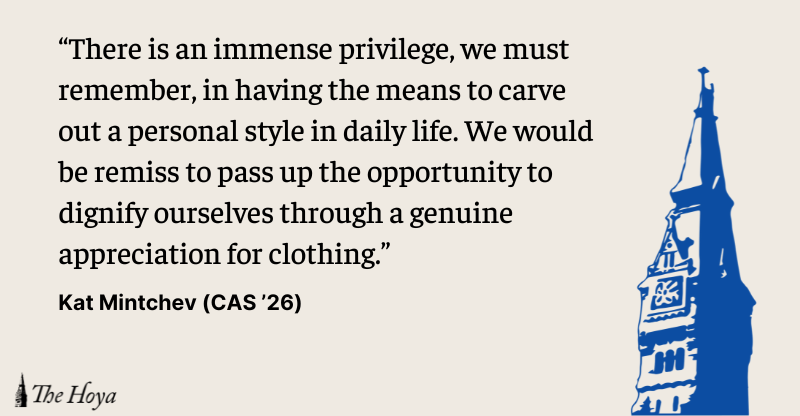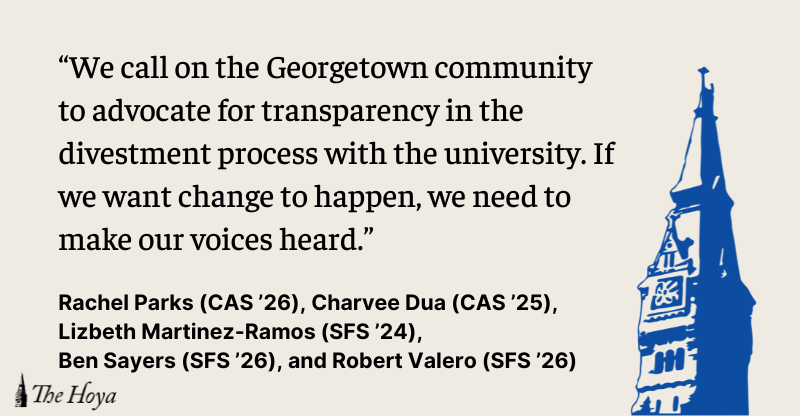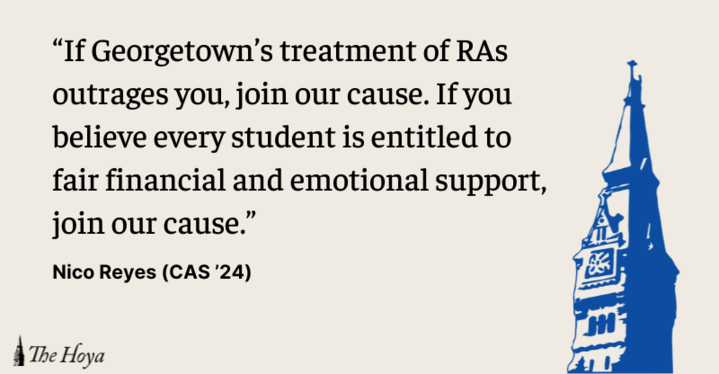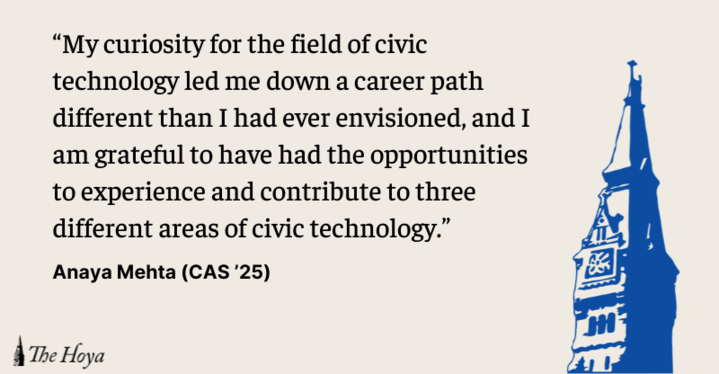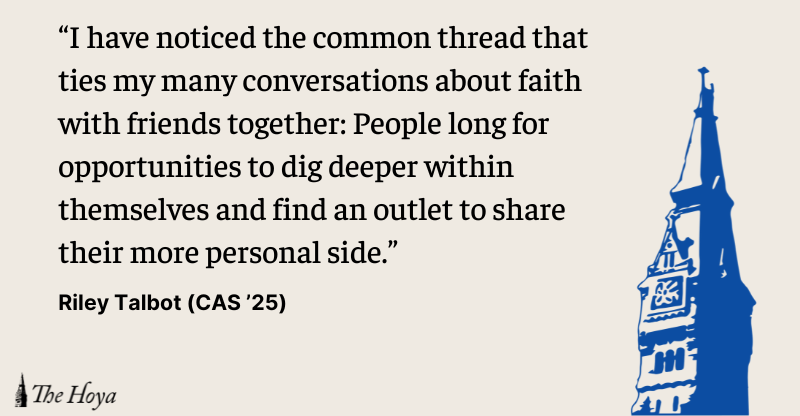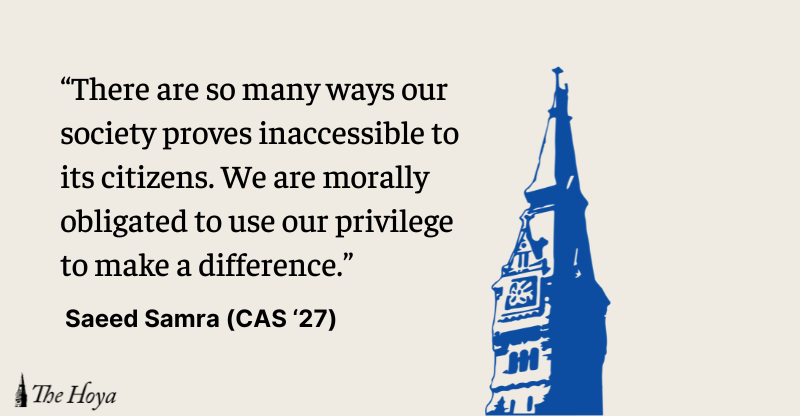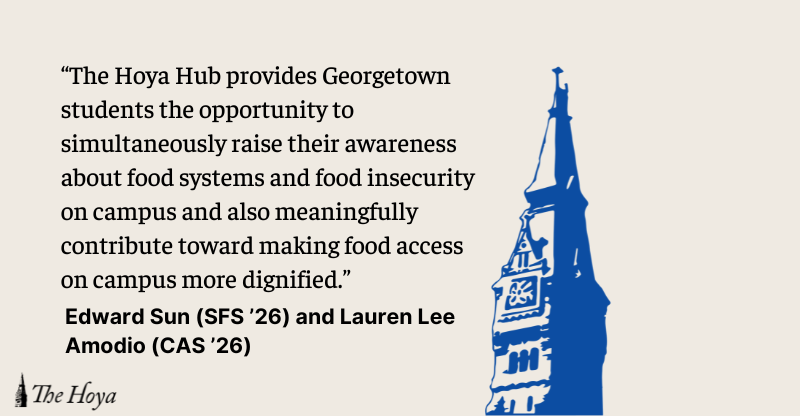Everything at Georgetown University unfolds against the Jesuit obsession with living well. Ironically, I never thought much of cura personalis beyond a pipe dream for the university to pack into a brochure for prospective students, benefactors and alumni — until my health tanked last semester and forced me into a medical leave. Now, as I face my body’s limitations, wellness has moved out of my periphery and become the primary concern of my daily life. The place where I’ve found lingering wellness is artistic self-expression: reconnecting with myself as a writer and starting Added to the File (ATTF), the first fashion photography magazine on campus, with my best friend, Lindsay Khalluf (CAS ’26).
Now more than ever, cura personalis appeals to me in its basic definition as the care we give to ourselves and the obligation we have to care for each other as a human collective. Illness has been a harsh reminder for me that wellness begins at the level of the self and the body. It is for this reason that I find it impossible to discuss our mutual wellness as humans without addressing the violence that our society inflicts to erase different bodies. When we consciously recenter the self, we find that the greatest act of dignity onto ourselves is uncovering who we really are and, in the process, celebrating the body by clothing it within an authentic personal style.
Any marginalized person experiences Western society as a system of violence that devalues the body into a commodity. In the media, women’s bodies become a collection of parts to be enhanced, concealed and aged backward with products and procedures.
Black and brown bodies endure the legacy of slavery in all areas of life, such as the ongoing practices of wage theft and an abysmal minimum wage that are attempts to preserve a cheap labor class. People with disabilities receive financial assistance that is only enough to maintain poverty ($12,140 annually, on average) or are funneled into a workforce that is hostile to different ways of existing. I could continue on, but we know the underlying point — any body that diverts the white/male/cisgender/heterosexual binary is mutilated (functionally and metaphorically) into something readily exploited by the Western empire.
Obviously, Georgetown and other elite institutions exist at the heart of empire, incubating the next generation of the American corporate and political ladder who are endlessly eager to claw their way to the top. It should come as no surprise that human flourishing is sparse when life becomes a treadmill.
Around this time last year, Lindsay and I started ATTF to feel authentically “well” on this campus within a creative space. Back then, I did not know how much creativity can do to rehabilitate a body that feels fundamentally damaged. But creativity, as Lindsay likes to say, breathes air into the lungs. It is something that I have learned not to take for granted as a motivating force in my life.
To invest in the self — and the body — as a source of artistic creation is the highest form of self-respect. In this, I invite us all to think critically about the meaning of a personal style. Dressing authentically means recentering texture, color, pattern and difference to our perspectives. It requires us to honor the body rather than attempt to mold it into a caricature of the most current social convention and to heed the cues of sickness and trauma when they arise. In a society that profits from self-immolation, the only way to reclaim the body is to see ourselves as whole, mutable people with the capability for creative expression.
In essence, this is what the first issue of our magazine is about: being confronted with the pressures and brutality of society and choosing to find yourself in it anyway. We invite the reader to view artistic expression as a mirror into the parts of the self that are entirely unique.
At Georgetown, we always circle back to the question of cura personalis. We can mock it, spit on the page wherever we find it and utilize it to criticize this institution that is indeed unendingly reprehensible, but the tenet will remain all the same. I see an opportunity for us to truly “care for the whole person” by recalling the value of the body and our identity. There is an immense privilege, we must remember, in having the means to carve out a personal style in daily life. We would be remiss to pass up the opportunity to dignify ourselves through a genuine appreciation for clothing.
Kat Mintchev is a sophomore in the College of Arts & Sciences.


